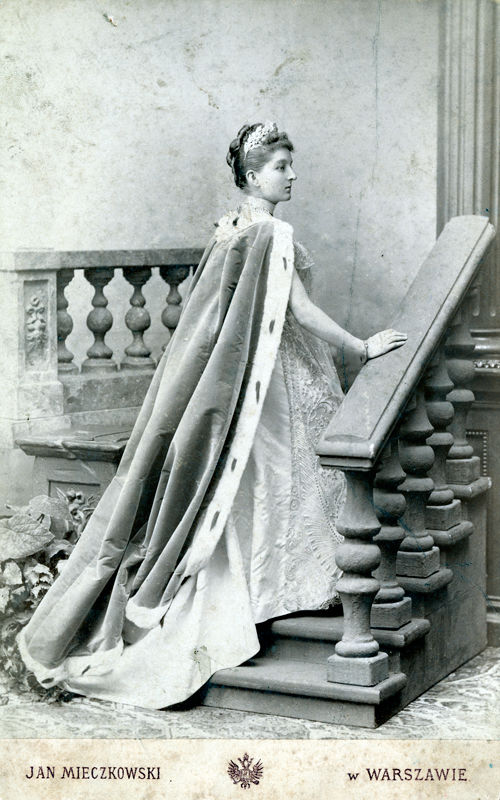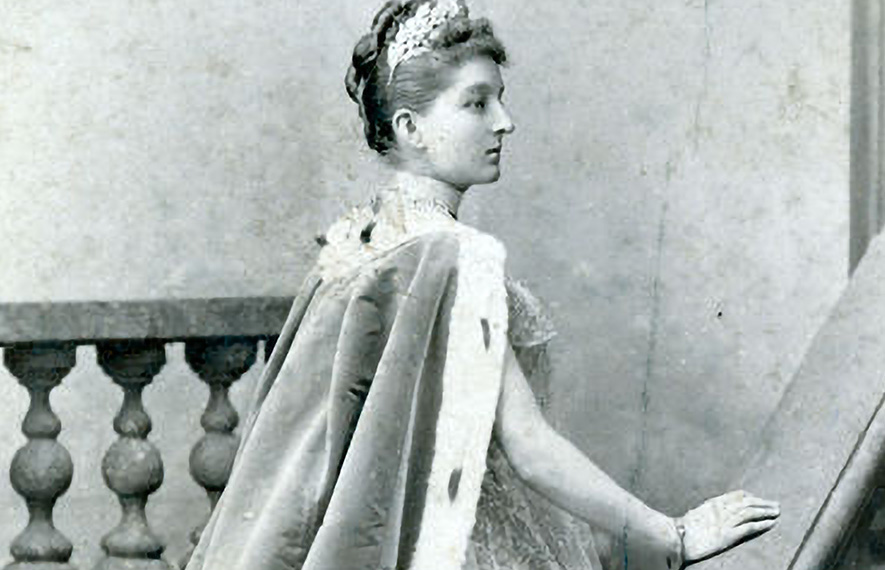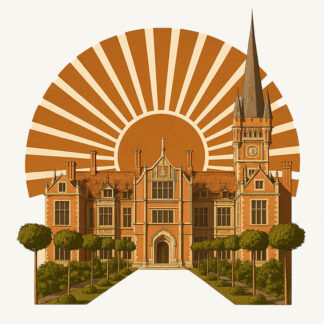The untold story of a woman who brought many to her side and attracted visitors to the manor
When it comes to the old Lithuanian palaces and manors, it is almost always about the male landlords. However, these men were usually accompanied by equally strong women. One of them is Countess Marija Kristina Aleksandra Lubormirska, later Tiškevičienė/ Tyszkiewicz, the wife of Vladislovas Tiškevičius/ Tyszkiewicz, the second of the Tyszkiewicz heirs to the Lentvaris estate, and a member in the family of the Duke Eugeniusz Adolf Lubomirsk.
She brought much more color to Lentvaris and, although she was not called that at the time, she was actually quite a prominent feminist not only in the Vilnius region but also in Poland.
At first glance, having grown up in a wealthy and influential princely family, Maria Kristina was quite spoilt, both in terms of wealth and male attention. Not only did she have many male suitors, but she was also the youngest and most beloved sister of four brothers (her father’s daughter from his first marriage was already dead).
For these reasons, Count Vladislovas Tiškevičius, the heir to the lower title of Lentvaris, faced a long and bitter struggle for his beloved’s hand. After falling in love with the sister of a study friend from a photograph and commissioning a frame with curtains for the picture, it took Vladislav five years before Maria Kristina became his wife in 1892.

Determination to make a place better and cozier kept Maria Kristina in Lentvaris
Vladislav’s father, Joseph Tyszkiewicz, was well-known for his weakness for women and his poor reputation in this respect, which probably contributed to Maria Christine’s long delay. Count Joseph Tiškevičius had housed his two illegitimate daughters and his son in Lentvaris and only hired beautiful nannies for his legitimate offspring.
Maria Kristina’s attitude towards such relationships became apparent later in her own child-rearing when she saw the inclination of her daughter Sofia’s chosen husband, Clemens Potocki, towards a woman and repeatedly tried to discourage him from such a choice.
However, Count Vladislav Tyszkiewicz was the exact opposite of his father and did not get along with him very well, which is why he inherited one of the family’s worst properties at the time, Lentvaris. This became a real challenge for the Count even before the wedding: it was unsuitable to bring a pampered lady to a deserted palace. For this reason, large investments were made to rebuild the palace and to create the environment.
However, this was not enough for Maria Christine: in the first years of her marriage, she felt uncomfortable in a strange place and often visited her relatives in Warsaw. The remedy for this discomfort was to become active in Lentvaris. The Countess first set about establishing a stud farm. As a dowry, she brought some of the best horses from her parents, which became the basis of the stud farm.
Many firsts: riding club, fire station, clubs, communities
Maria Kristina Tyszkiewicz also founded a riding club in Lentvaris, which was mainly made up of men. She often rode in men’s clothes, in a manly style, jumping over all the most difficult obstacles without much effort. She was also one of the few professional female athletes at the time who competed in and won the biggest horse competitions in Russia. In this area, Maria Kristina was far superior to her husband, who, because of his father’s opposition, had never learned to ride properly.
The owners of Lentvaris were equal partners in social activities. Together with Vladislovas and Antanas Tiškevičius, Marija Kristina founded the Vilnius Art and Science Museum Society. With her husband, she established a fire station and an ambulance in the vicinity of Lentvaris.
The press of the time described a fire incident: when a carpenter’s house caught fire, the Countess was one of the first to arrive at the scene and led the firefighters, urging them to hurry. Countess Maria Christine was also the patron of the Vilnius Ambulance Relief Fund, attracting many dignitaries as supporters.
The press of the time portrayed Maria Christine as the perfect wife, always beautiful and elegant. She was considered one of the best-dressed women in her class. Her husband, Count Vladislav Tyszkiewicz, who had excellent taste, also chose her clothes. As was popular at the time, during her stays in Warsaw, she and her friends would visit the feminist café Ster, where they would discuss important women’s issues and read women’s magazines.
During the most difficult times, the strongest character emerged
Firstly, when her husband was forced to live in Italy because of his political views, Countess Tyszkiewicz was left to look after the family property, during which time she calmly managed the affairs between Vilnius and Lentvaris, wisely giving instructions to the land managers.
Even during this difficult period, she did not abandon her social activities: In 1911, she donated land to the Church of the Annunciation of the Lord, St. She also donated land for the construction of the Catholic Church of the Conception of the Blessed Virgin Mary in Lentvaris and ensured that the construction was started as soon as possible.
Finally, Countess Marija Kristina Tiškeviciene is the woman who saved all the property in Lentvaris. When the Russian occupation began, orders were given to blow up the residence.
The Countess initially paid for information on which soldier was to do the job. Then, hiding behind a horse, she waited for everyone to leave by train and paid 100 roubles to the soldier for the inviolability of Lentvar. The Countess was willing to sacrifice her life for the sake of a foreign place that had become her home, but she lived abroad for some time and never saw Lentvaris again.



